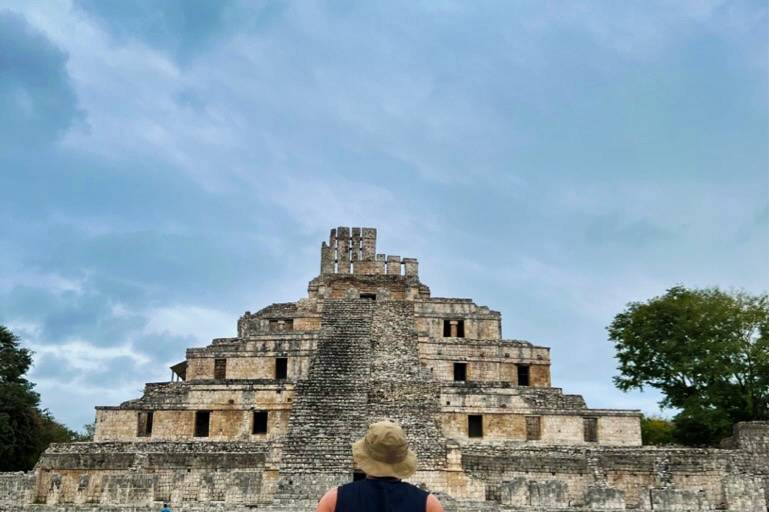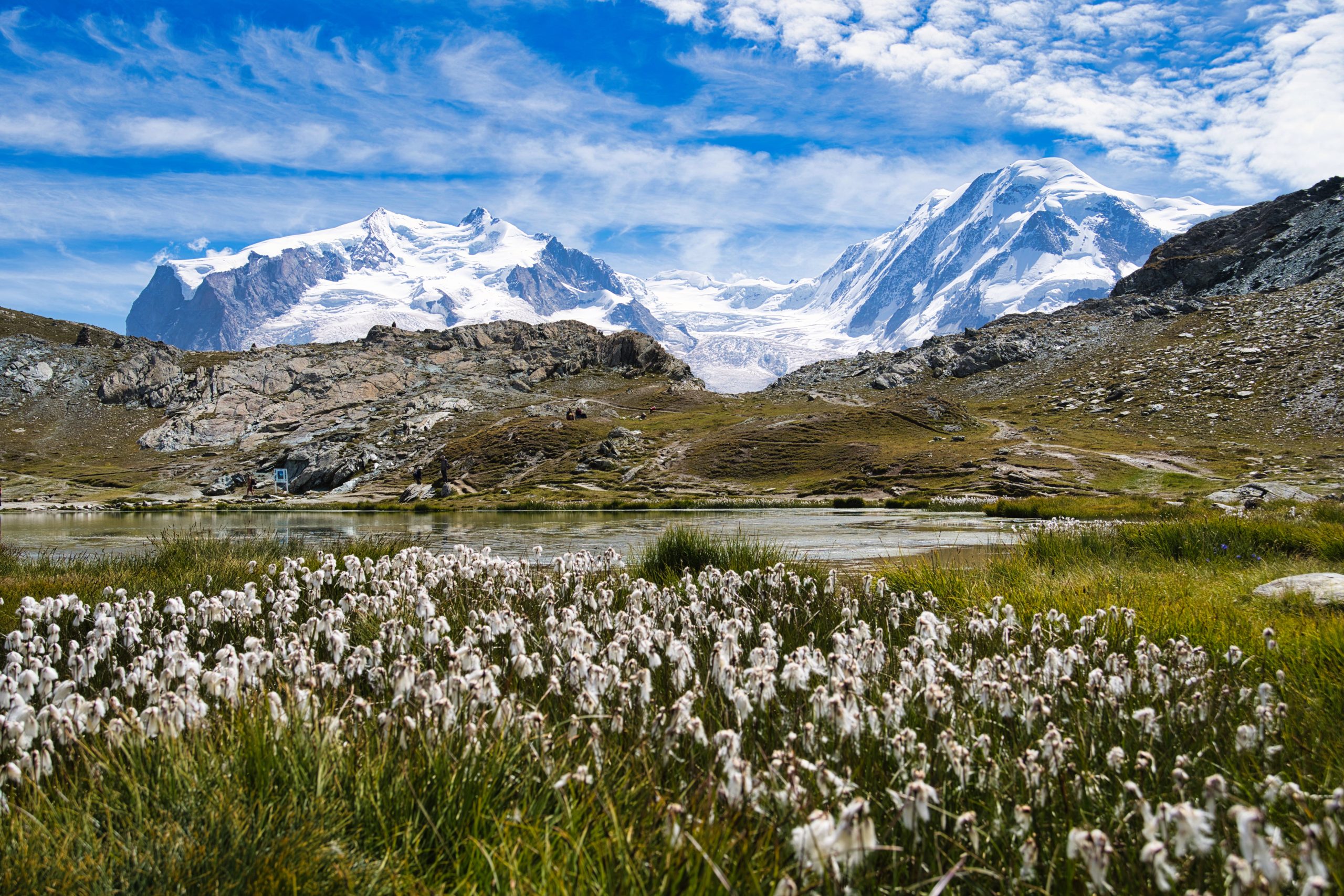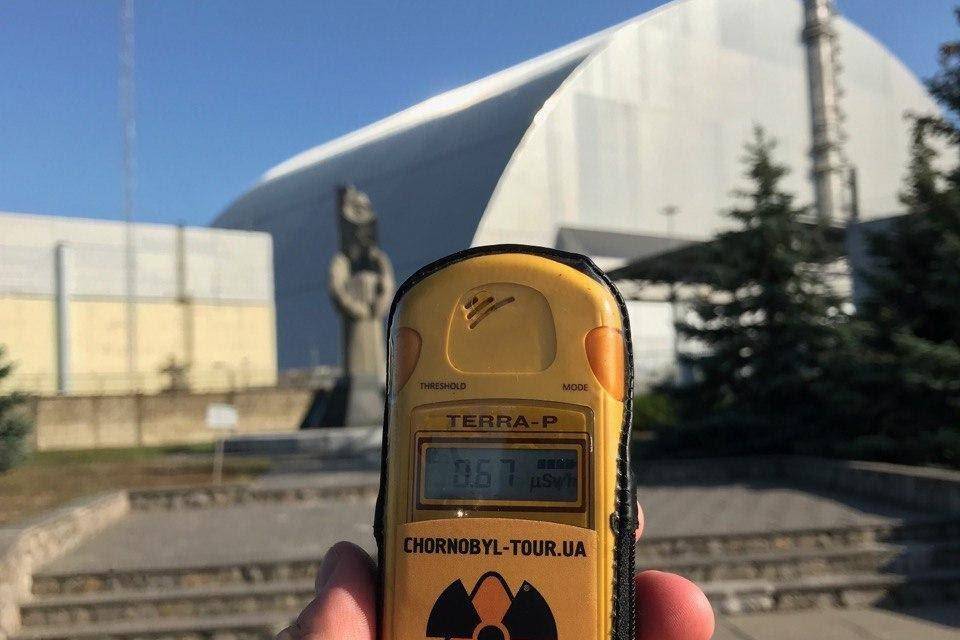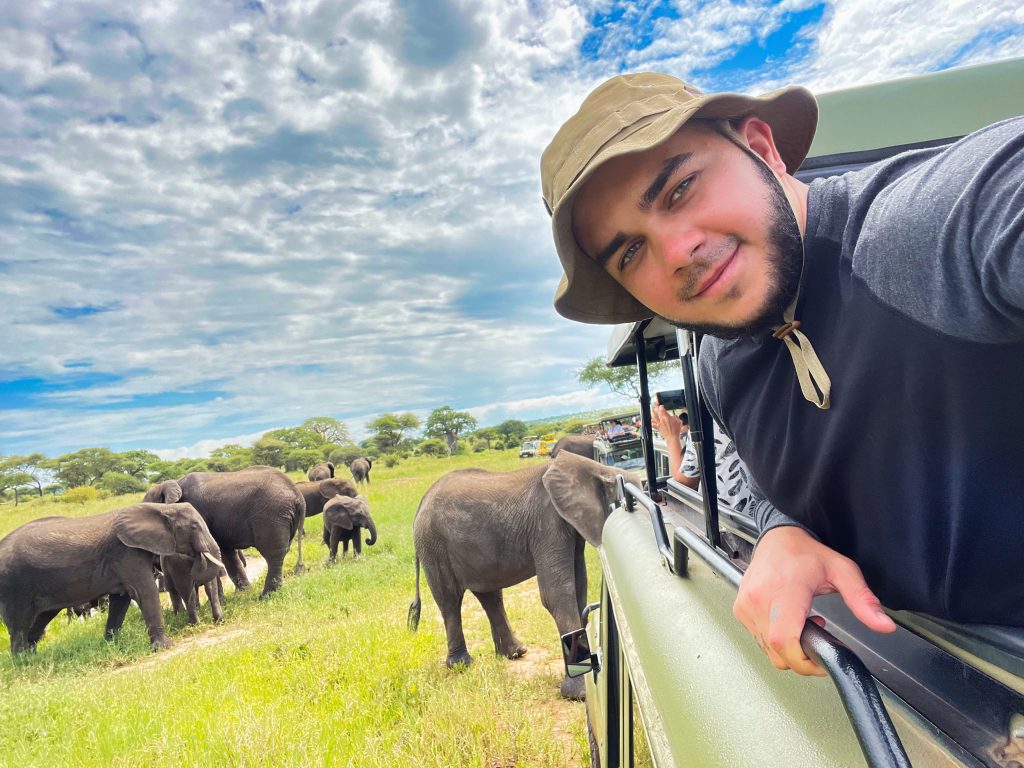 First of All
First of All
At the outset of 2021, my girlfriend and I vacationed in Zanzibar. On a whim, we decided to extend our adventure to Tanzania, targeting the Ngorongoro Reserve and Tarangire National Park for a safari experience. The excursion set us back $2000 for a 3-day experience, encompassing flight, food, lodging, and entrance fees to the parks. Additional gratuities for the guides were essential and expected daily. Our expedition group consisted of 10 individuals, split evenly between two jeeps. The guides leading our journey were adept professionals, possessing intricate knowledge of the parks down to every individual tree. In my view, the caliber of the guide can make or break a tour, especially when spanning over three days.
Our co-travelers in the vehicle were amiable, including a child who was pleasantly well-behaved throughout the trip.
A piece of advice for potential safari-goers: It’s vital to research and read reviews about your guides, perhaps on platforms like TripAdvisor. Moreover, when boarding the jeep, observe your fellow travelers. After all, you’ll be sharing space with them for the duration of the trip.
Day 1 — Part 1 Flight Zanzibar to Arusha: The Journey Begins
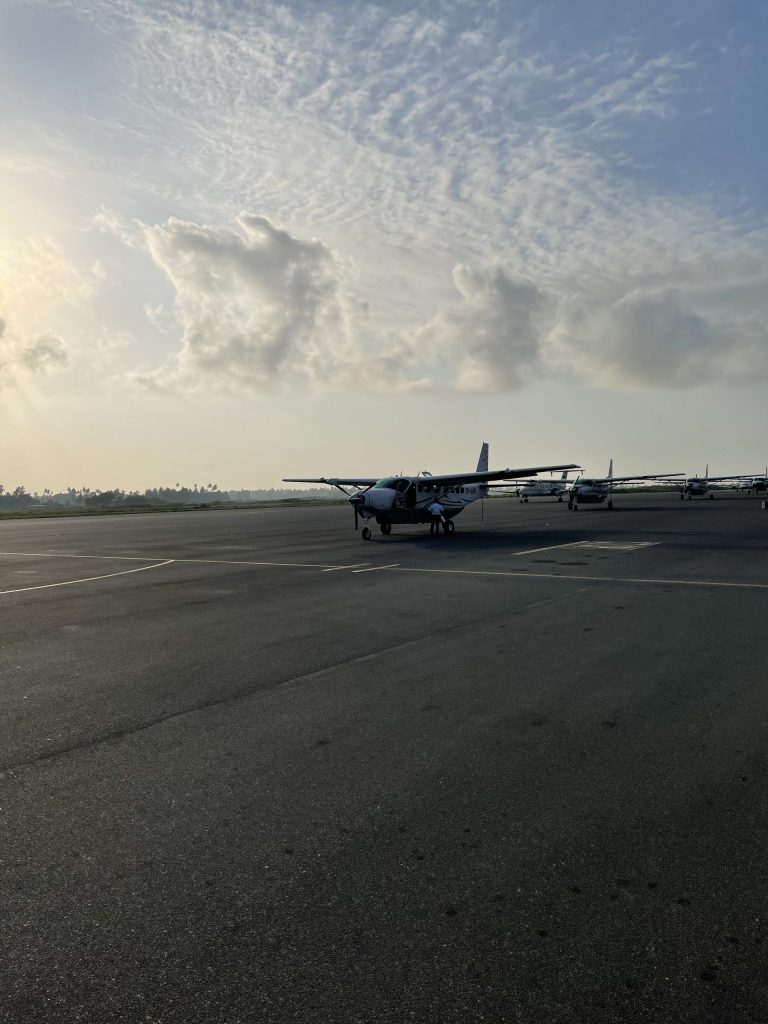 As we neared the aircraft, a collective sense of astonishment overcame us. Instead of the anticipated charter plane, a modest single-engine aircraft greeted us. Judging from its somewhat aged appearance and ashtrays embedded in the seats, this wasn’t a recent model. The interiors, too, displayed some wear and tear. Without much ado, we stowed our luggage and settled into our seats.
As we neared the aircraft, a collective sense of astonishment overcame us. Instead of the anticipated charter plane, a modest single-engine aircraft greeted us. Judging from its somewhat aged appearance and ashtrays embedded in the seats, this wasn’t a recent model. The interiors, too, displayed some wear and tear. Without much ado, we stowed our luggage and settled into our seats.
Securing seats in the second row, my girlfriend and I had an unobstructed view of the pilot and his dashboard.
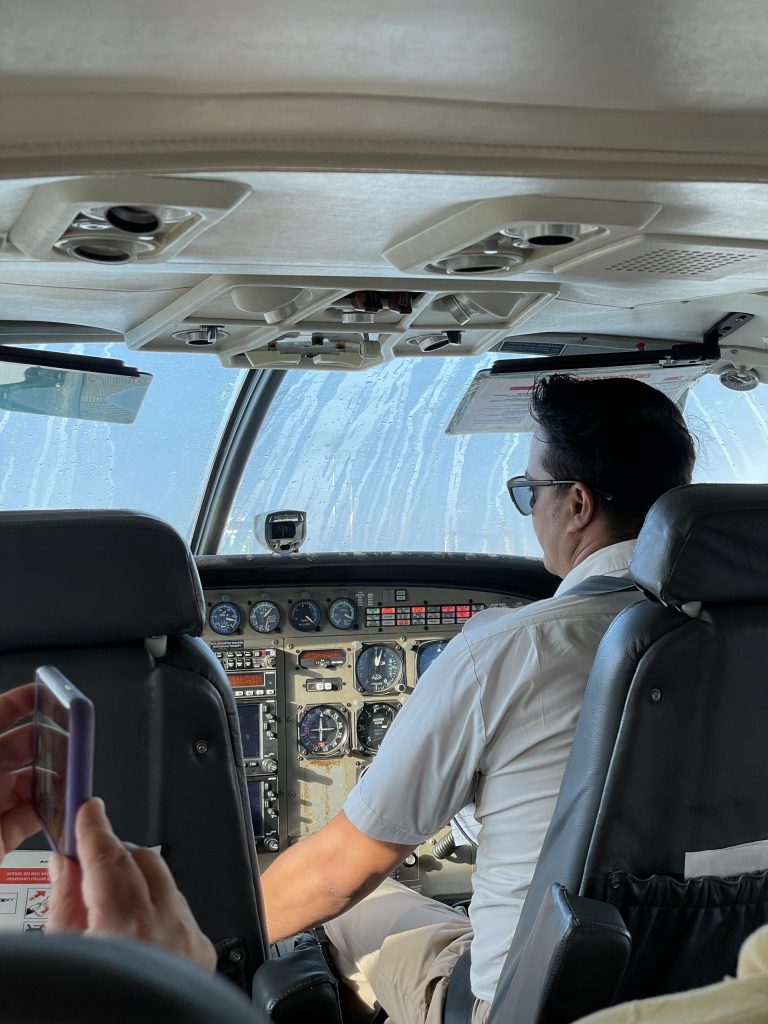 The pilot, exuding an undeniable charisma reminiscent of Maverick from «TOP GUN», was the sole captain of this vessel. And, not to jump ahead, but his expertise was evident in the flawless takeoff and landing.
The pilot, exuding an undeniable charisma reminiscent of Maverick from «TOP GUN», was the sole captain of this vessel. And, not to jump ahead, but his expertise was evident in the flawless takeoff and landing.
Despite our initial reservations, the flight proved comfortable and captivating, largely due to the magnificent aerial views it offered. A distant glimpse of the majestic Kilimanjaro was indeed a treat.
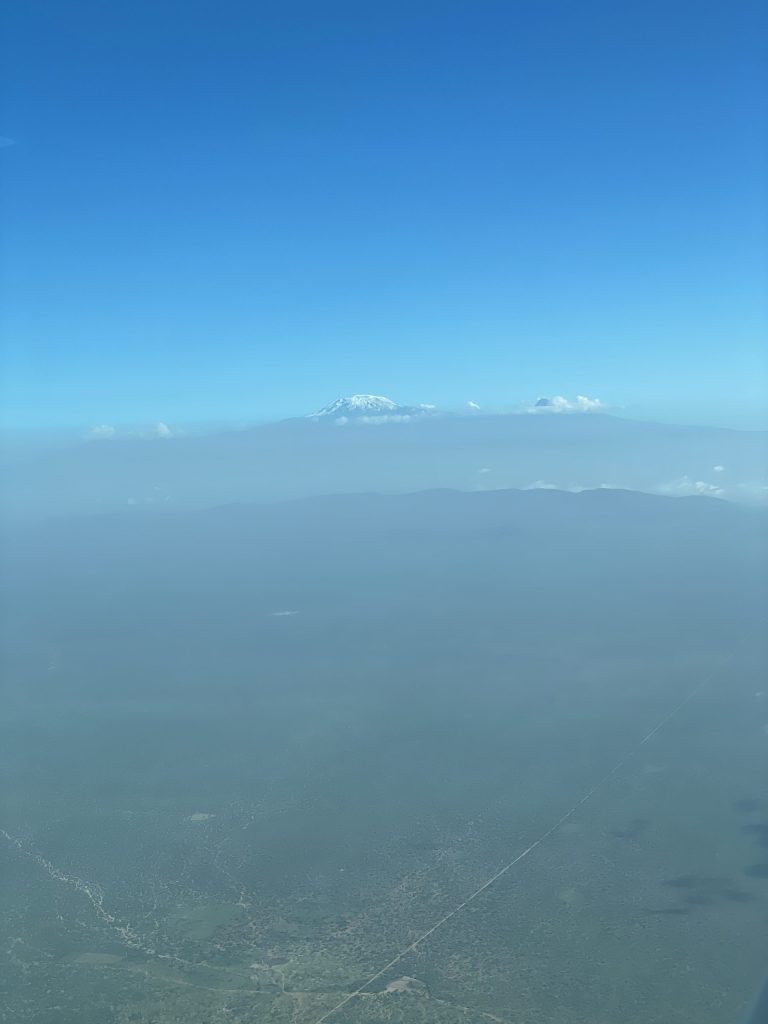 As we soared above Tanzania, I was left spellbound by the breathtaking landscapes. Vast plateaus painted in verdant hues revealed the nation’s ample humidity and rainfall – elements that contributed to its fertility.
As we soared above Tanzania, I was left spellbound by the breathtaking landscapes. Vast plateaus painted in verdant hues revealed the nation’s ample humidity and rainfall – elements that contributed to its fertility.
Mid-flight, it dawned on me: I was living my dream. The dream of experiencing Africa in its rawest form – its expansive savannahs, iconic baobabs, and the wild spectacle of elephants, giraffes, and lions. Africa, with its rich tapestry of tales, movies, and literature, had always beckoned me since my younger days. Eager to kick-start the safari adventure, I wished for a swift landing.
In a matter of hours, we touched down at Arusha’s quaint airport, characterized by its compact runway. Post a brief exploration, we stepped out to be greeted by our awaiting guide. Dividing ourselves into smaller groups, we boarded our respective jeeps.
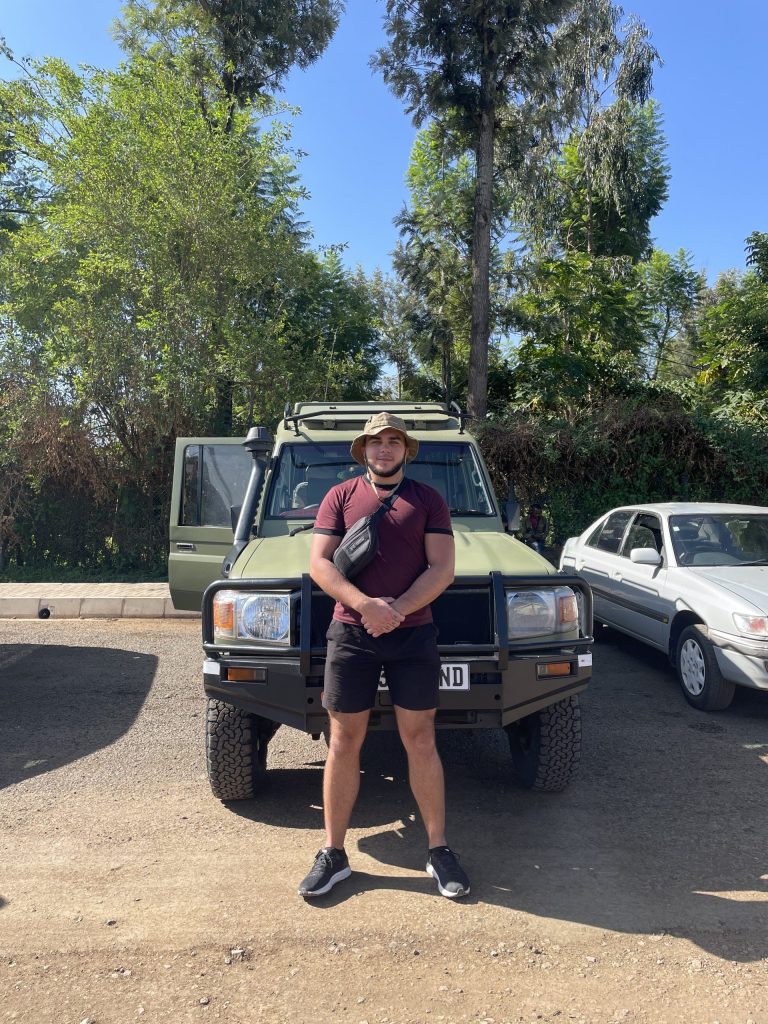 The real expedition was about to commence, and I was brimming with anticipation of the unknown.
The real expedition was about to commence, and I was brimming with anticipation of the unknown.
Day 1 — Part 2 Ngorongoro Reserve: Africa’s untouched wilderness
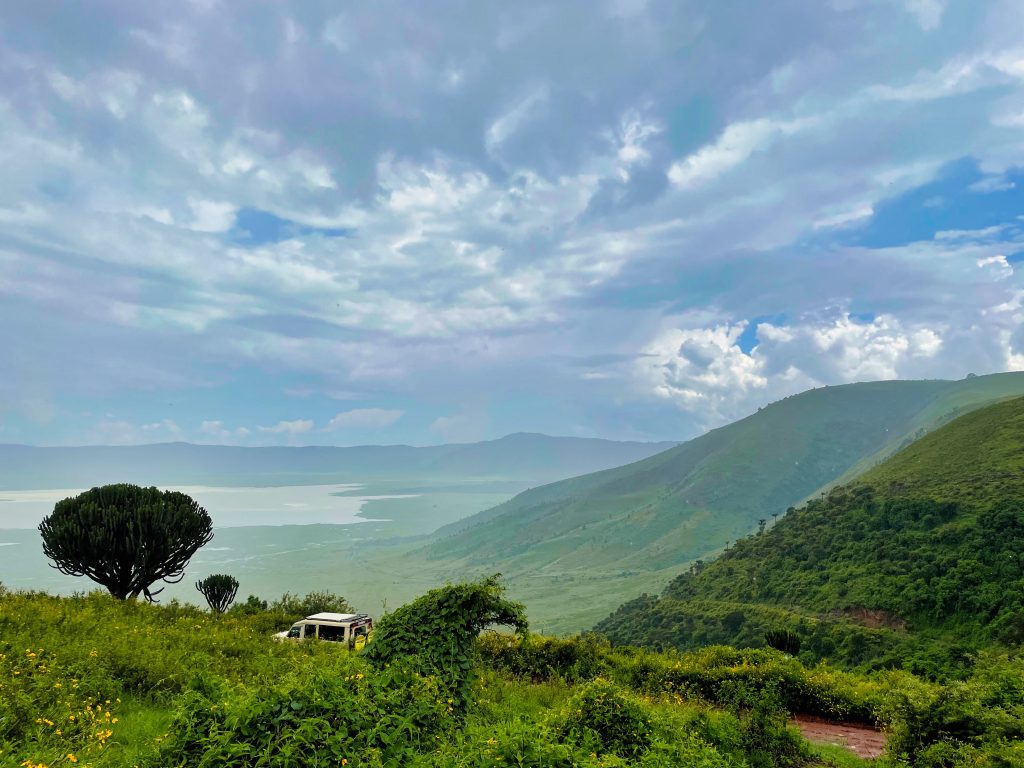 It’s impossible to put into words the excitement I felt inside, finally, after all these years, I got here. After all, I have studied Africa, its nature, traditions, and history since I was a child, and here I am 23 years old, and standing here, 12,000 km away from home, I did it!
It’s impossible to put into words the excitement I felt inside, finally, after all these years, I got here. After all, I have studied Africa, its nature, traditions, and history since I was a child, and here I am 23 years old, and standing here, 12,000 km away from home, I did it!
Our journey brings us to the remarkable Ngorongoro Crater, a testament to the Earth’s tumultuous past. This vast caldera forged approximately 2 million years ago from a volcanic eruption, stands as one of the world’s largest. It’s a sanctuary teeming with wildlife, offering a glimpse into the rich tapestry of Africa’s biodiversity.
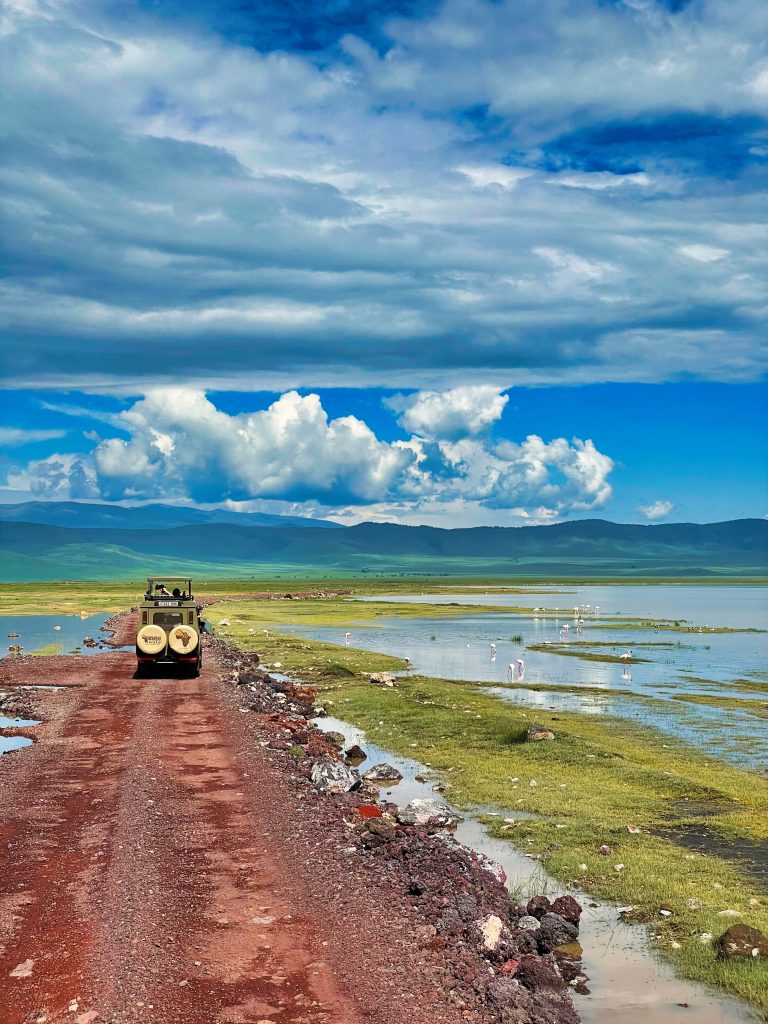 Ngorongoro isn’t just significant for its natural beauty. The region boasts a rich history, with ancestral remains of modern humans found here dating back three million years, bearing witness to the cradle of humankind. Local tribes, such as the Maasai, have coexisted with the wildlife for centuries, preserving a harmonious relationship that is deeply ingrained in their culture and traditions.
Ngorongoro isn’t just significant for its natural beauty. The region boasts a rich history, with ancestral remains of modern humans found here dating back three million years, bearing witness to the cradle of humankind. Local tribes, such as the Maasai, have coexisted with the wildlife for centuries, preserving a harmonious relationship that is deeply ingrained in their culture and traditions.
As we commenced our descent into this colossal «bowl,» surrounded by towering mountains, the rain graciously abated. The wind ushered away the clouds, unveiling the vast expanse below. Our first sighting, a zebra, stared back, its curiosity mirroring our own.
Although our rugged jeep served us well, it met its match in the challenging terrains of the crater. As fate would have it, we found ourselves stuck soon after spotting two majestic lions lounging nearby. Thankfully, my current ability to relay this tale confirms that our paths did not cross in a less-than-favorable manner.
Our adventure continued, taking us close to the imposing buffalo – a sight to behold and certainly not a creature to be on the wrong side of. The sheer excitement had us on our feet, heads swiveling in all directions to ensure we missed nothing. Yet, it was the awe-inspiring sight of a Savannah elephant, the largest land animal on our planet, that truly took our breath away. It ambled before us, commanding respect and admiration.
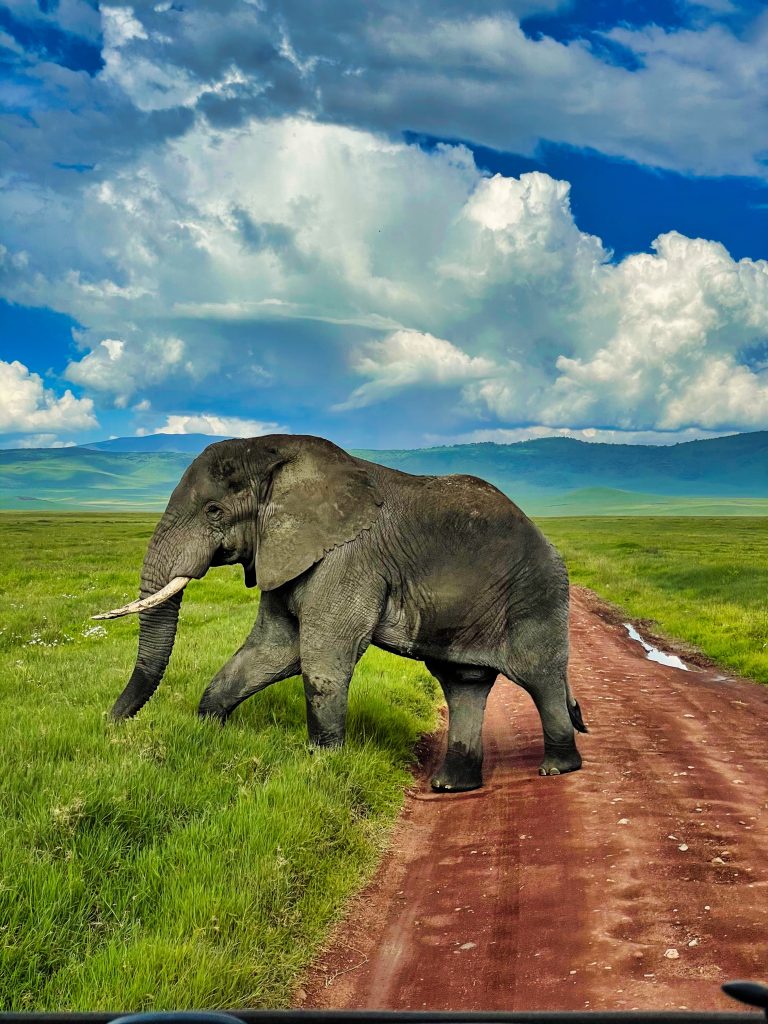 The crater’s unique isolation has allowed a delicate equilibrium between predators and herbivores to be maintained for hundreds of thousands of years, a natural balance that is awe-inspiring to witness.
The crater’s unique isolation has allowed a delicate equilibrium between predators and herbivores to be maintained for hundreds of thousands of years, a natural balance that is awe-inspiring to witness.
Lastly, our journey wouldn’t have been as fulfilling without our professional guide. His innate sense of the land and its inhabitants ensured we were privy to the best the Ngorongoro had to offer. With an endless trove of tales and a keen eye for wildlife, he made our experience unforgettable. A trip to Ngorongoro is not just a journey across land but through time, culture, and the breathtaking tapestry of life.
Honestly, even though we were in a jeep for about 5-7 hours, sitting the whole time, the stunning scenery around us made it so we didn’t feel tired. Time just flew by because of the beautiful surroundings.
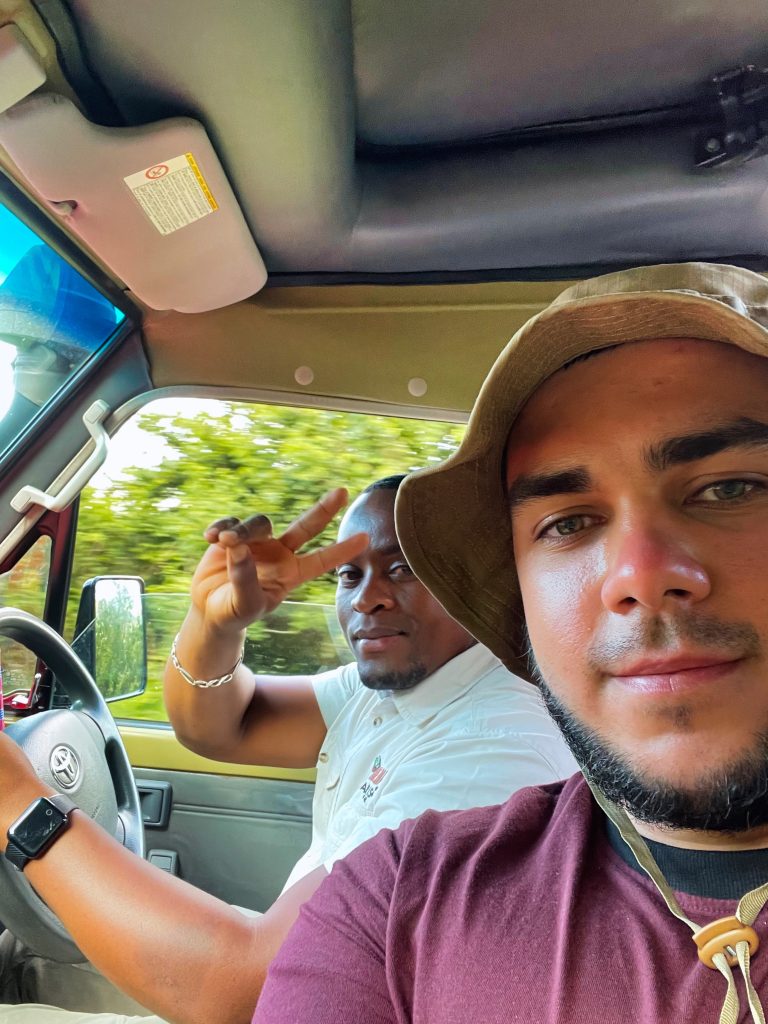
More photos from Ngorongoro














Day 1 — Part 4: Night in the castle
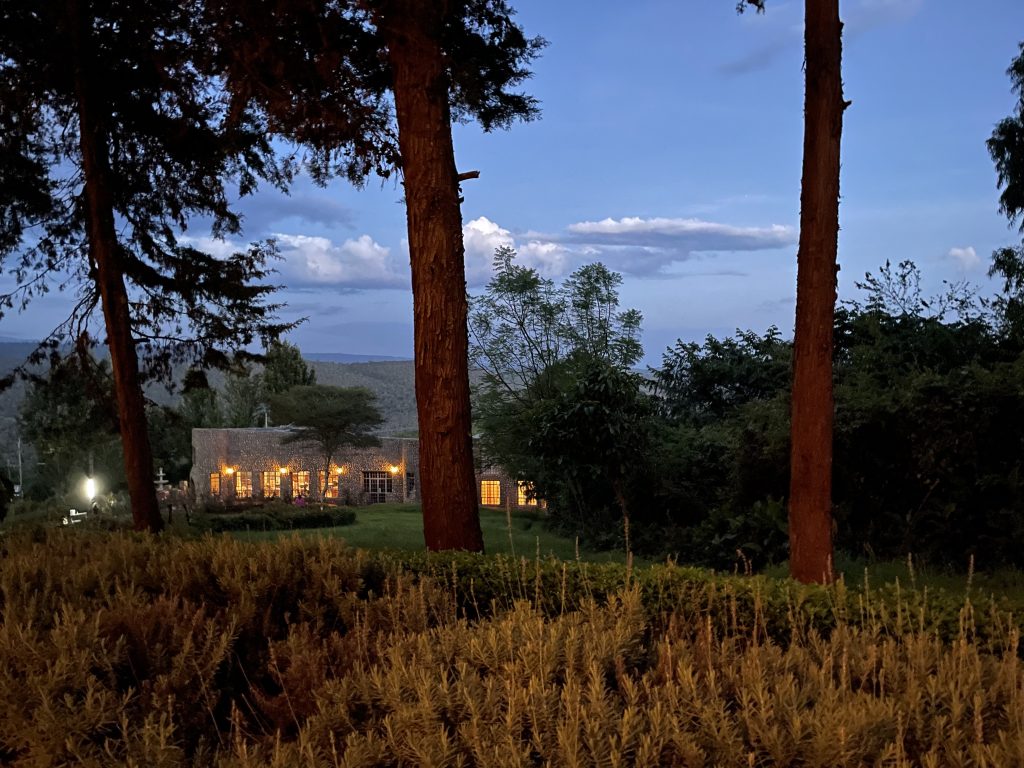 During our safari adventure in Tanzania, instead of the typical lodges, our itinerary included hotel stays, adding a unique touch to our experience. Among these, the Castle Hotel was an absolute highlight. The establishment boasted expansive, elegantly appointed rooms, ensuring our utmost comfort. To our delight, the culinary offerings were impeccable, with the spicy banana soup standing out as a particularly tantalizing treat.
During our safari adventure in Tanzania, instead of the typical lodges, our itinerary included hotel stays, adding a unique touch to our experience. Among these, the Castle Hotel was an absolute highlight. The establishment boasted expansive, elegantly appointed rooms, ensuring our utmost comfort. To our delight, the culinary offerings were impeccable, with the spicy banana soup standing out as a particularly tantalizing treat.
The luxury of sinking into their plush beds cannot be overstated; we drifted into deep slumbers, rejuvenating us for the next day. With early dawns heralding new adventures, the sound sleep we enjoyed was both a necessity and a luxury, and the Castle Hotel ensured we were always well-rested and ready.
Day 2: Serengeti National Park: Lunch with the monkeys
 The vastness of the Serengeti National Park is a testament to nature’s grandeur. Rooted in a rich history, this iconic park paints a vivid picture of Africa’s diverse flora and fauna. Our journey took us deep into the heart of the Serengeti, where the tapestry of life unfolded before us. From the ancient Baobabs that dot the landscape to the expansive grasslands, every corner of the Serengeti holds a story.
The vastness of the Serengeti National Park is a testament to nature’s grandeur. Rooted in a rich history, this iconic park paints a vivid picture of Africa’s diverse flora and fauna. Our journey took us deep into the heart of the Serengeti, where the tapestry of life unfolded before us. From the ancient Baobabs that dot the landscape to the expansive grasslands, every corner of the Serengeti holds a story.
During our exploration, we were treated to a plethora of sights. The majestic elephants, a symbol of the African wilderness, approached a water source. Amidst the herd, a young calf, in its playful innocence, managed to get entangled in its own trunk and took a small tumble, a sight both heart-warming and amusing. The grace of the giraffes, those tall sentinels of the savanna, was evident not only in their majestic strides but even in their rare intimate moments. Amid the heat and the vast plains, we also spotted the kings of the jungle – lions, lounging in their regal laziness.
There were many elephants and lions here. But it was the monkeys that were in charge of the roads. They were very brave and would stop travelers. They wanted food before letting them go.
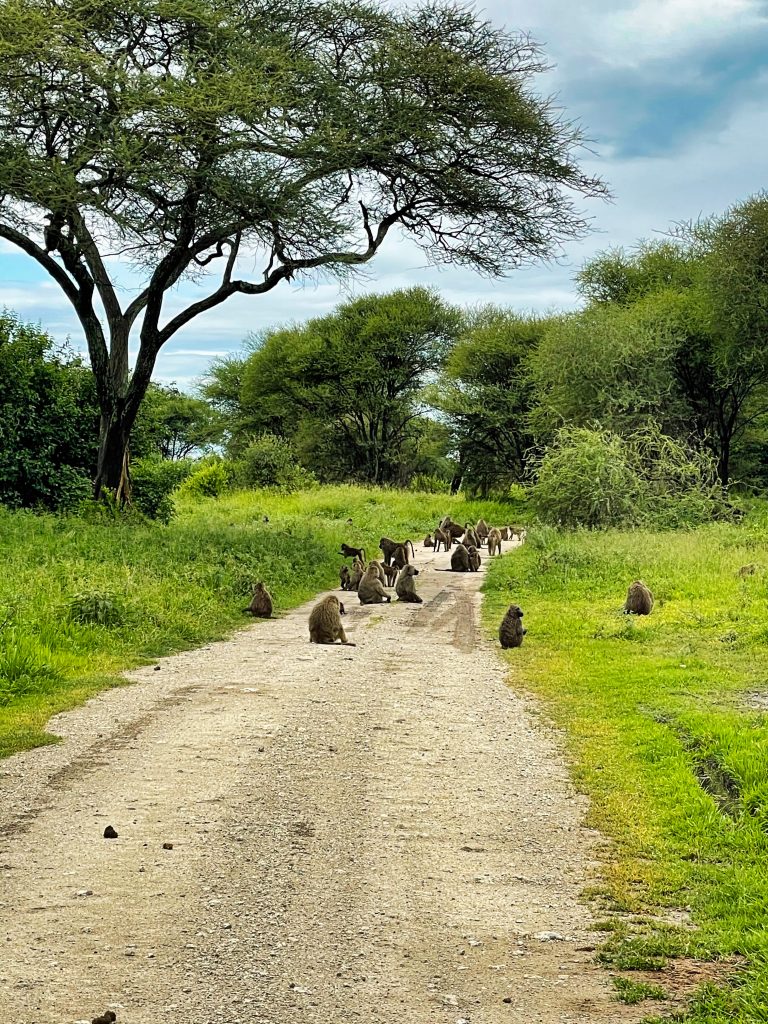 We had an interesting lunch in the park. The place was safe, but our guides had a lot to do. They cooked a nice meal for us. At the same time, they had to keep an eye out for the smart monkeys. These monkeys weren’t scared of people at all. They always tried to grab our food. We had to be very careful. If we left our bags or any food around, the monkeys might take them. Sometimes, they would even put things up in the trees!
We had an interesting lunch in the park. The place was safe, but our guides had a lot to do. They cooked a nice meal for us. At the same time, they had to keep an eye out for the smart monkeys. These monkeys weren’t scared of people at all. They always tried to grab our food. We had to be very careful. If we left our bags or any food around, the monkeys might take them. Sometimes, they would even put things up in the trees!
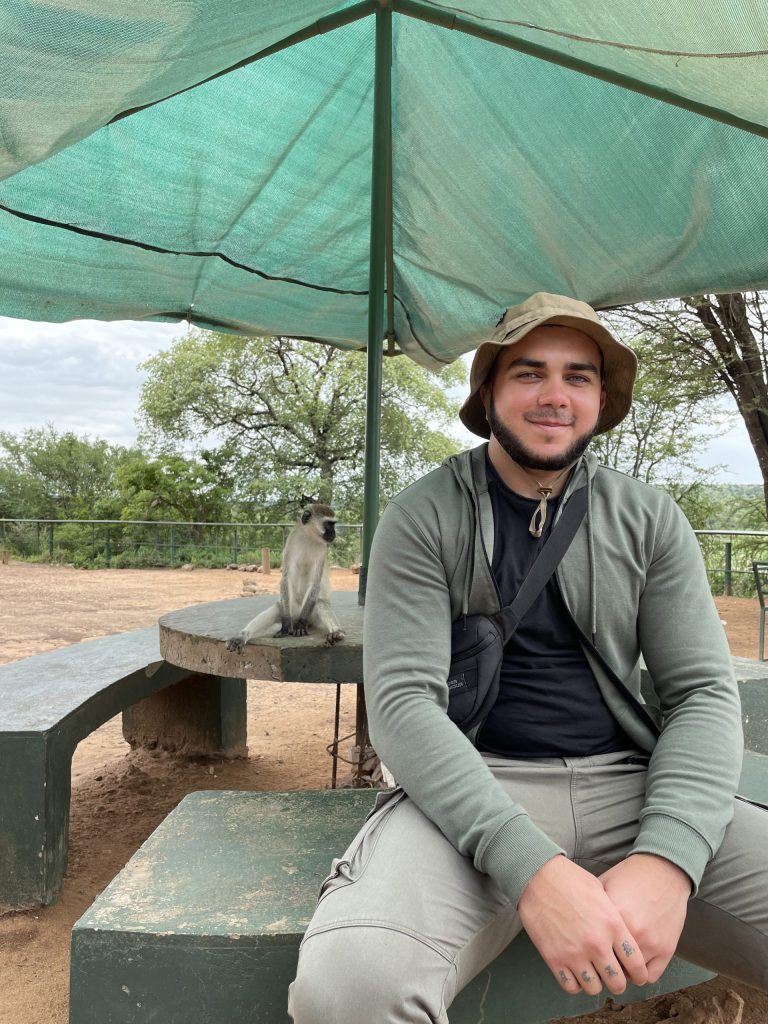
In reflection, the Serengeti offered an experience distinct from Ngorongoro. With its lush vegetation and storied landscapes, it’s a captivating chapter in Tanzania’s rich tapestry of wonders.
African elephants in Tanzania
I decided that more should be written about these marvelous animals
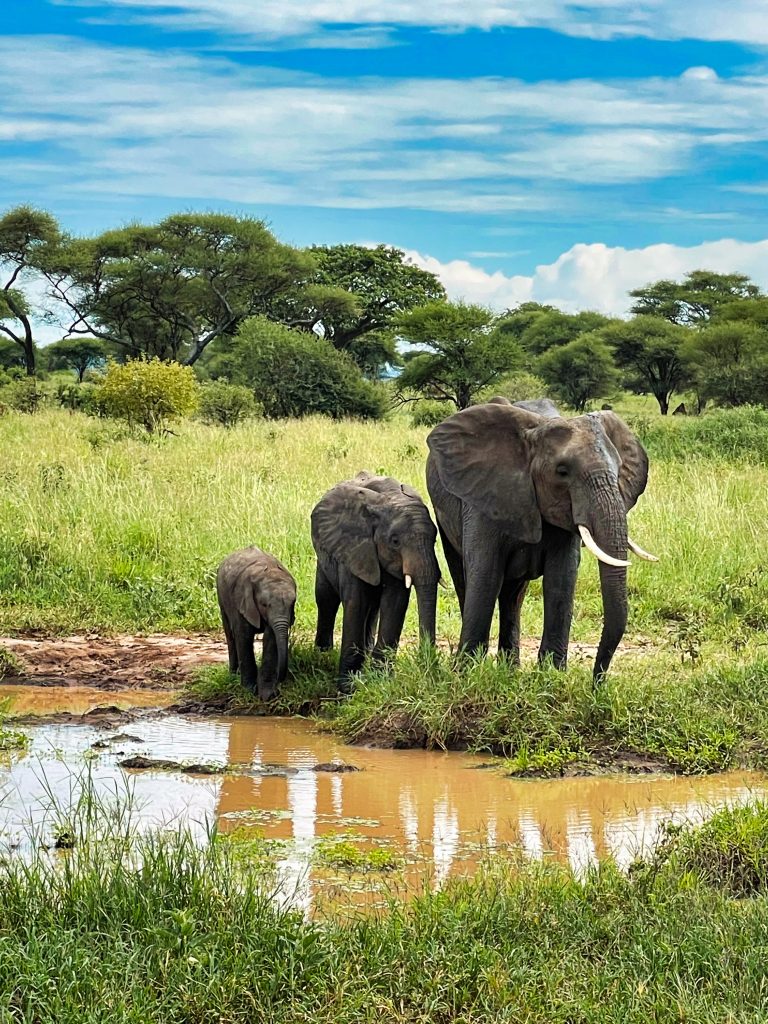 African elephants, the largest land animals on Earth, roam across diverse habitats in Africa, from savannas to forests. These majestic creatures have large ears for cooling and versatile trunks for various tasks, from feeding to communication. Living in matriarchal groups, they display remarkable intelligence and social bonds, communicating through vocalizations and touch. Although they primarily consume vegetation, their survival is threatened by human activities, particularly poaching for ivory and habitat loss. Conservation efforts, including anti-poaching initiatives and habitat restoration, aim to protect these vital ecosystem engineers and the environments they inhabit.
African elephants, the largest land animals on Earth, roam across diverse habitats in Africa, from savannas to forests. These majestic creatures have large ears for cooling and versatile trunks for various tasks, from feeding to communication. Living in matriarchal groups, they display remarkable intelligence and social bonds, communicating through vocalizations and touch. Although they primarily consume vegetation, their survival is threatened by human activities, particularly poaching for ivory and habitat loss. Conservation efforts, including anti-poaching initiatives and habitat restoration, aim to protect these vital ecosystem engineers and the environments they inhabit.
Elephants are deeply social creatures, living in matriarchal groups led by the oldest female. Within these groups, there are clear family rules and hierarchies. Young elephants are cared for not just by their mothers but by other females in the group, often referred to as «allomothers». This community parenting ensures the young are protected and educated. Elephants also display customs like mourning their dead, indicating a deep-rooted sense of family and community.
Some safety tips
- Maintain Distance: Always keep a safe distance from the elephants. They may appear calm, but they are wild animals and can be unpredictable.
- Stay Quiet: Avoid making loud noises or sudden movements that might startle or provoke them.
- Stay in the Vehicle: Unless instructed by your guide, always remain in your safari vehicle when in the presence of elephants.
- Avoid Flash Photography: Flash can irritate or scare elephants. Always ask your guide before taking photos, and avoid using a flash.
- Be Aware of the Matriarch: The matriarch is the leader and protector of the group. If she feels threatened, she might be charged to protect her family.
More photos from Serengeti National Park









Day 3: Kilimanjaro Foothills & Materuni Waterfalls
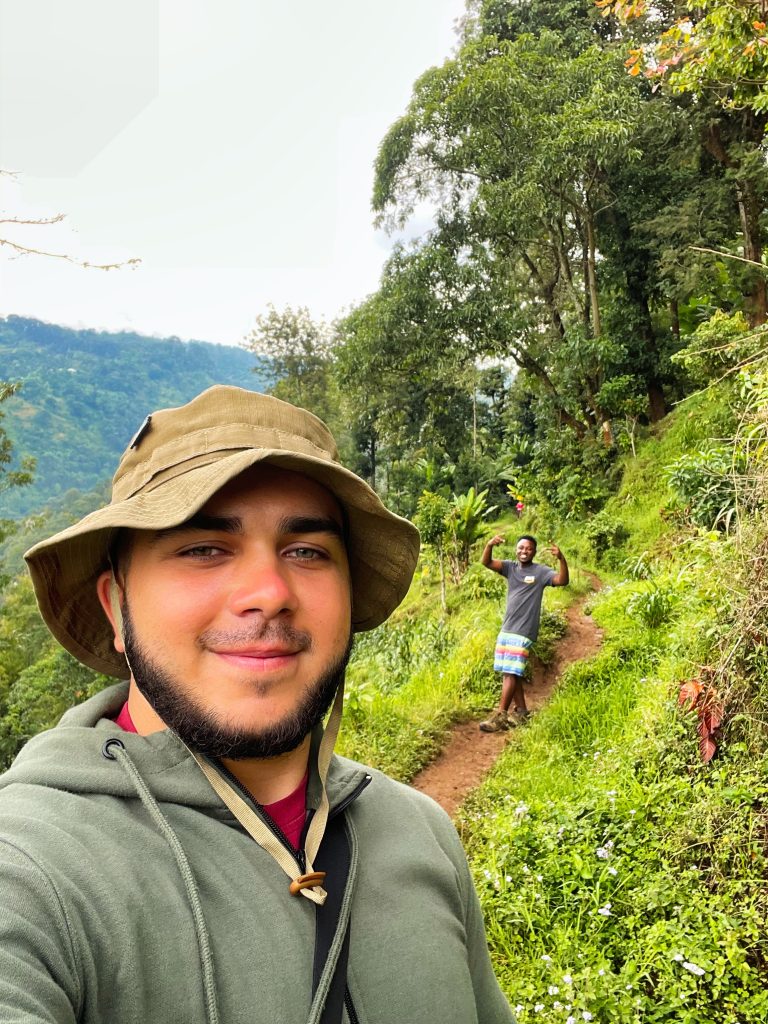 After spending a night in a hotel, whose name escapes me and of which I took no photos, I distinctly recall its view of Kilimanjaro’s peak.
After spending a night in a hotel, whose name escapes me and of which I took no photos, I distinctly recall its view of Kilimanjaro’s peak.
The next day, we set out on a hiking trail leading to Kilimanjaro and the Materuni waterfall, which stands tall at 80 meters. Our path took us through ordinary villages, where daily life buzzed along. Locals, upon spotting tourists, would often try to sell items or offer their services. Our shoes collected mud as we trekked the damp terrain, but the breathtaking surroundings distracted us from any discomfort. The thick jungle around me made me feel like I was in a movie scene, and this illusion was only occasionally broken by locals doing daily routines like laundry.
Along our journey, we encountered chameleons, lizards, and even monkeys. We indulged in fresh berries and bananas plucked straight from plants and trees, tasting far better than anything you’d find in a store.
Soon, the distant sound of cascading water reached our ears. When I looked up, the magnificent Materuni waterfall came into view. Overwhelmed by its beauty, I decided to take a dip beneath its cascade. A heads-up for those considering doing the same: the water is freezing, and the force from an 80-meter drop can be intense. Despite this, the experience was unforgettable and completely worth it.
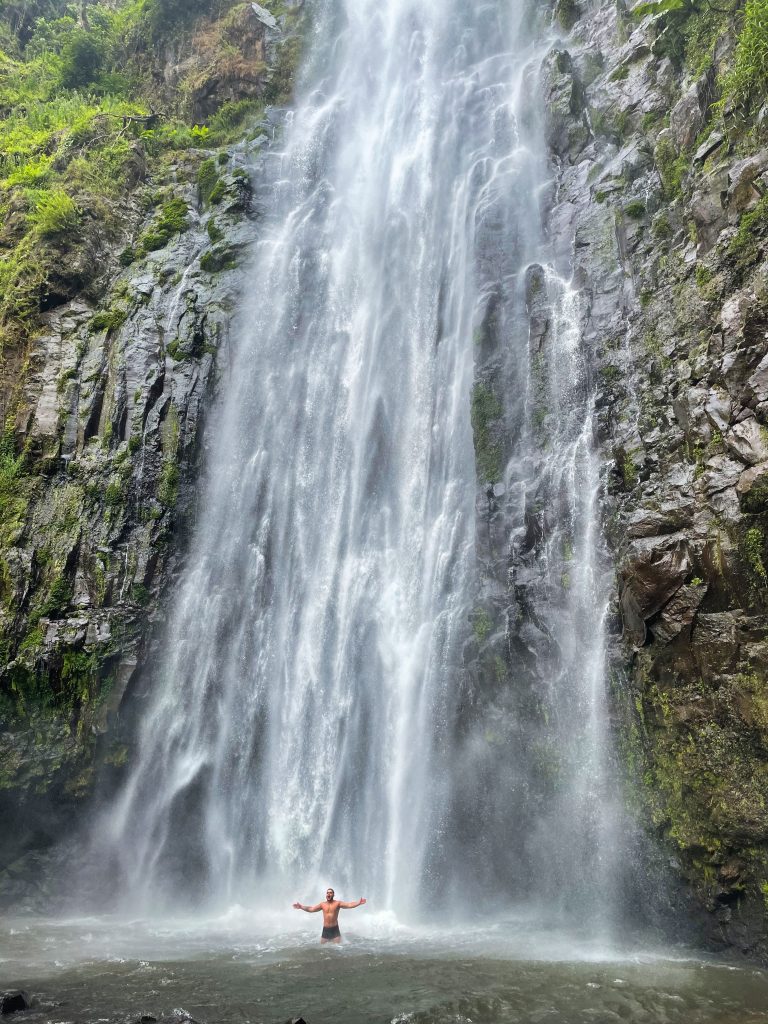
Once we dried off and got dressed, we continued our journey to the village located higher up. There, we were treated to a somewhat theatrical coffee-making ritual, complete with dances and songs, as is customary in Africa.
After the hike, we had to improvise to clean our sneakers of dirt since we were catching a regular flight back to the island of Zanzibar. Dirty but happy we headed to the airport.
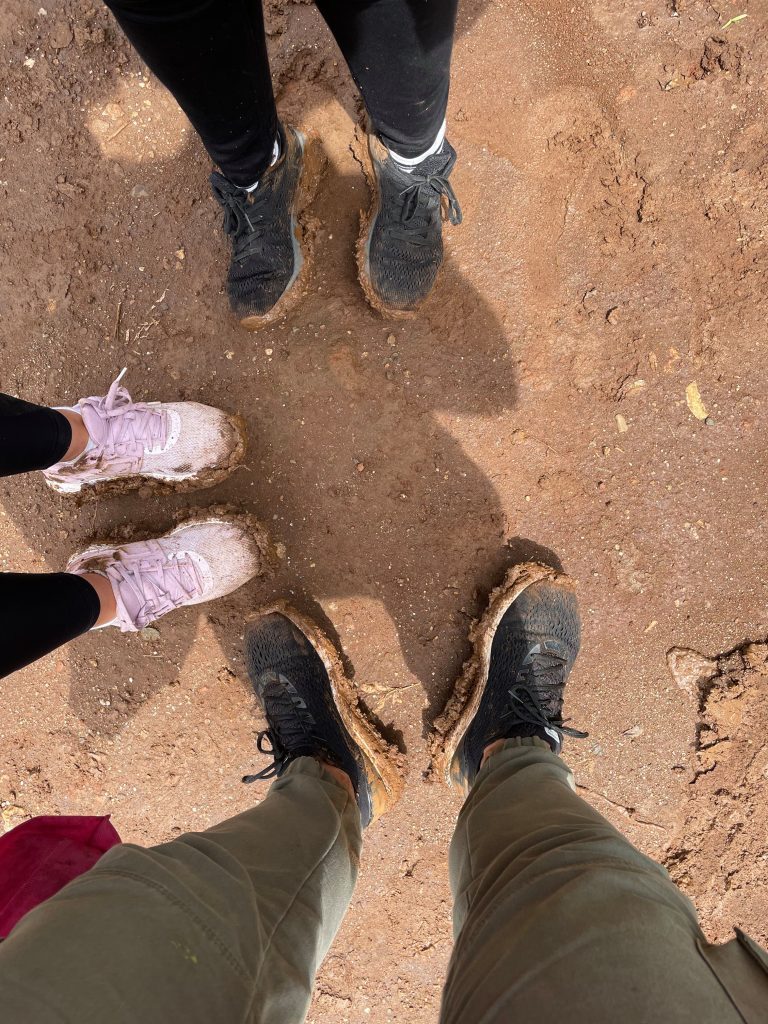
At the airport, we grabbed a beer and reflected on our adventures. Parting ways was bittersweet. In just three days, we had formed genuine friendships and became a tight-knit team. It’s uncommon for such diverse individuals to bond so quickly and deeply. I genuinely hope they’re doing okay. The couple with the child hailed from Belarus, a nation under Russian occupation with a tyrannical leader, while another friend was from Poltava, Ukraine, a city not far from war zones.
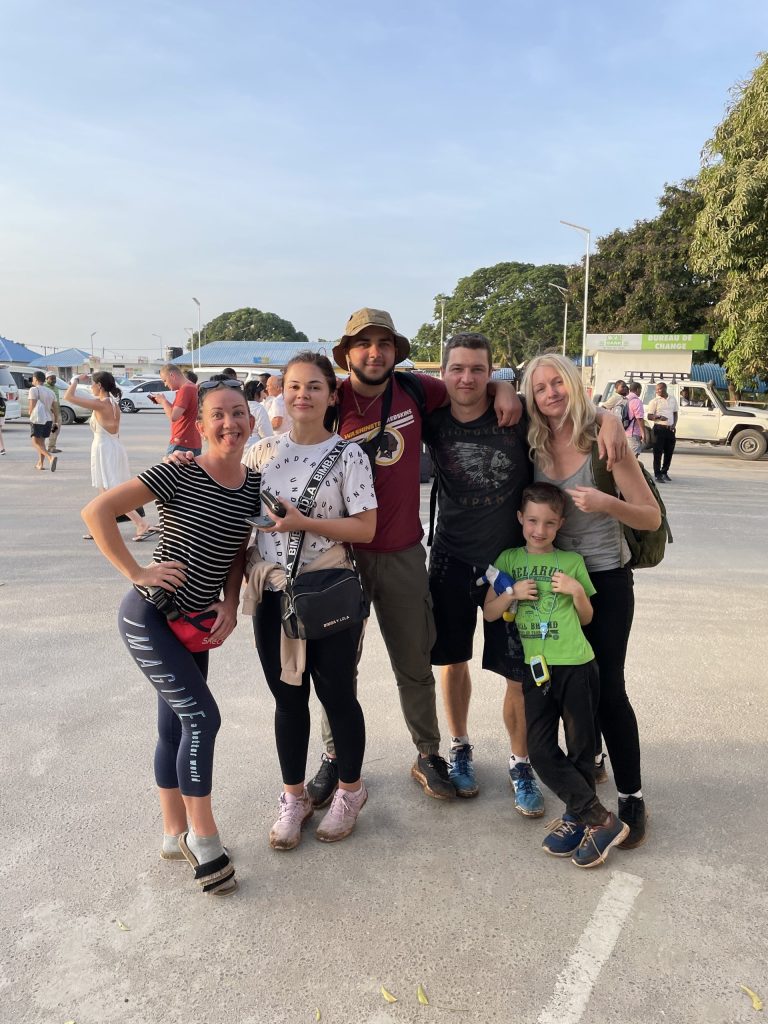
More photos from Kilimanjaro Hiking









Common Questions
How does the Jeep safari process take place?
The process of a jeep safari primarily revolves around immersing participants in nature’s wonders. Expert guides, equipped with profound knowledge of the region’s wildlife, steer the jeeps across diverse landscapes, maximizing the possibility of spotting varied species. The best moments for these encounters often lie in the tranquil early mornings and the serene late afternoons, given the heightened activity of animals. While on the safari, it’s imperative for participants to observe with care and respect, avoiding any disturbances to the natural behaviors of the creatures. The safari’s essence is not just about spotting dominant predators or colorful birds but genuinely appreciating the intricate beauty of nature from the jeep’s unique perspective. The guides can’t guarantee that you will see all the animals. But you will definitely see some.
What to take on a 2-3 day safari?
When embarking on a 2-3 day safari with guides and hotel stops, prioritize packing light yet smartly. Opt for neutral-colored clothing, which blends well in the wild and is sensitive to animals. Comfortable footwear is a must for any short walks or treks. Don’t forget essential gear like binoculars for spotting distant wildlife and a camera to capture those magical moments. Keep personal necessities like sunscreen, insect repellent, personal medications, and a reusable water bottle close. A small backpack can be handy for daily excursions.
How to choose a guide and tour company?
When choosing a guide and tour company, especially when accommodations and guiding services are provided, it’s essential to prioritize the company’s reputation and feedback. Begin by scouring online reviews from platforms like TripAdvisor to gauge previous travelers’ experiences. Ensure the company is licensed, upholds rigorous safety standards, and, if possible, champions sustainable tourism practices. Engage directly with potential companies, asking pertinent questions about their services to ascertain their transparency and responsiveness.
How safe is it in general?
In general, safaris are designed with safety as a top priority, given the potential risks associated with wildlife encounters and remote environments. Reputable safari companies employ trained and experienced guides who are familiar with animal behaviors and can navigate the natural terrains expertly. Additionally, accommodations, whether lodges or tents are typically constructed to ensure safety from wildlife while providing comfort.
However, like any activity, there is inherent risk. There have been instances of accidents or dangerous encounters on safaris, though they are relatively rare. Some of these incidents arise from unpredictable wildlife behavior, unforeseen environmental factors, or, occasionally, human error or negligence. For instance, there might be instances of animals charging vehicles or campsites, or rare occurrences of diseases in certain areas.
To maximize safety:
- Always follow guidelines provided by the guides and tour operators.
- Never approach or provoke wildlife.
- Stay within designated areas, especially at night.
- Ensure you’re updated on any health precautions, such as vaccinations or malaria prophylactics, relevant to the region.
By adhering to safety precautions and choosing reputable tour operators, the risks can be minimized, ensuring an enriching and memorable safari experience.
NomadicGeorge
I'm a 26-year-old digital marketer with a passion for exploring the globe. Having journeyed through 20 countries, my love for sports, history, adventure, and hiking has only grown. Traveling isn't just a hobby for me; it's a way of life. Join me as I share my experiences from around the world.
